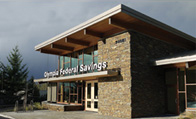Submitted by Washington Department of Fish and Wildlife
Razor clam diggers can return to ocean beaches for four days of digging beginning February 20. State shellfish managers with the Washington Department of Fish and Wildlife (WDFW) approved a dig on evening low tides after marine toxin tests showed the clams are safe to eat.
The approved dig is for the following beaches, dates and low tides:
- February 20, Thursday, 4:54 pm 0.0 feet; Long Beach, Twin Harbors, Copalis
- February 21, Friday, 5:35 pm -0.1 feet; Long Beach, Twin Harbors, Mocrocks
- February 22, Saturday, 6:11 pm -0.2 feet; Long Beach, Twin Harbors, Copalis
- February 23, Sunday, 6:44 pm -0.1 feet; Long Beach, Twin Harbors, Mocrocks
No digging is allowed before noon for allowed digs, when low tide occurs in the evening.
“Diggers who brave the elements are being rewarded with quiet beaches and abundant clams,” said Dan Ayres, WDFW coastal shellfish manager. “Spring is on the horizon, but late winter can be a great time to avoid the crowds and take advantage of ongoing razor clam opportunities along the Washington coast.”
For a list of proposed razor clam digs on Long Beach, Twin Harbors, Copalis and Mocrocks beaches through April, please see our razor clam webpage.
WDFW authorizes each dig independently after getting the results of marine toxin testing. Final approval of the tentatively scheduled openings will depend on whether results of marine toxin tests show the clams are safe to eat.
In order to ensure conservation of clams for future generations, WDFW sets tentative razor clam seasons that are based on the results from an annual coast-wide razor clam stock assessment and by considering harvest to date. To see videos of WDFW’s sustainable management work for razor clam seasons, visit our razor clam page.
WDFW is also asking razor clam fans around the state to weigh in on the perennial question: Which is better, clam gun or shovel? To register support for a favored digging method, clam diggers can post a photo or video, complete with hashtag #TeamClamShovel or #TeamClamGun on any social media before the end of the spring season.
Additional safety considerations are important this time of year. “Diggers have encountered rough surf and high winds this month and we encourage people to prepare for adverse conditions,” said Ayres. “Check the weather and bring a good light source, especially when low tide occurs later in the evening—diggers who arrive an hour or two before the tide may be able to bag the limit before dark.”
Diggers should be aware that Washington Department of Health has closed a small section of Mocrocks Beach due to a nearby sewage spill. This area will remain closed until the end of February and will not be open during the approved razor clam digs starting Feb. 20. Diggers can still access Mocrocks Beach north and south of the 1,500 ft. shoreline closure. WDFW’s website has more information.
All diggers age 15 or older must have an applicable 2019-20 fishing license to harvest razor clams on any beach. Licenses, ranging from a three-day razor clam license to an annual combination fishing license, are available on WDFW’s website and from license vendors around the state.
Under state law, diggers at open beaches can take 15 razor clams per day and are required to keep the first 15 they dig. Each digger’s clams must be kept in a separate container.
Persons with disabilities who need to receive this information in an alternative format or who need reasonable accommodations to participate in WDFW-sponsored public meetings or other activities may contact Dolores Noyes by phone (360-902-2349), TTY (360-902-2207), or email (dolores.noyes@dfw.wa.gov). For more information, see https://wdfw.wa.gov/accessibility/requests-accommodation.

















































